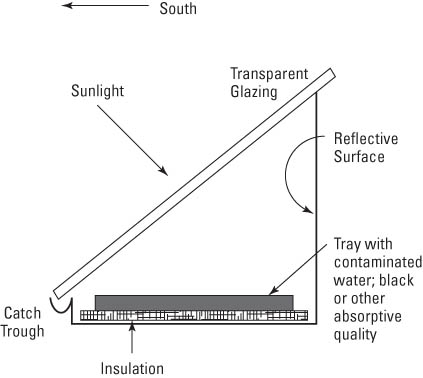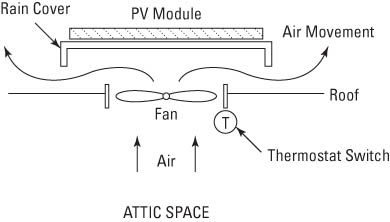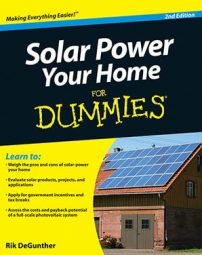How to build a solar-powered water purifier
Using the sun to purify drinking water is a great solar project for the do-it-yourselfer. A solar-powered purification system the size of a microwave oven can yield up to 3 gallons of purified drinking water on a sunny day.
Here’s what you need for a basic solar powered water purifier like the one shown in the figure:
| Wooden or sheet metal enclosure | Reflective material like aluminum foil |
| Black paint, used for barbeque pits | Sheet of glass |
| Insulation (the white foam kind is fine) | Glue (silicon sealant or similar weather-resistant material) |
| Black tray that can absorb heat | Catch trough and container for purified water |

To assemble your solar-powered water purifier, find a place near a water source (for easy filling) and follow these steps:
-
Paint the exterior of the wooden or sheet metal enclosure black to enhance absorption.
-
Install the reflective surface at the back and side walls of the enclosure and glue the insulation to the bottom.
-
Put a tray of contaminated water inside the enclosure and place the glass on top.
-
Arrange the catch trough at the bottom of the glass, angled downward to a container (like a plastic jug) to collect the purified water.
-
Aim the contraption toward the sun.
That’s it — you’re done!
The first few times you use this device, the water may taste a little odd. Let the system “sweat” for a few weeks, and the bad taste will go away.
How to use a portable solar shower
You can use a portable shower that uses solar energy to heat the water. Solar showers are convenient for camping and backpacking. You can hang one out by your swimming pool for a quick, simple rinse. To use a solar shower, follow these steps:
-
Fill a specially constructed plastic bag with water and then place it in direct sunlight to heat up.
The top of the 5-gallon bag is clear, and the back wall is black to absorb maximum sunlight. To warm the water of your portable shower, simply position the bag so that the clear top faces the sun. Most portable showers come with a thermometer so you know when the water’s reached a comfortable temperature.
-
When the water’s hot enough, hang the bag from a tree for a gravity-fed, hot shower.
Portable showers can get really hot, over 120°F, so beware. Always sample the temperature before you step in.
Installing a solar-powered attic vent fan
An attic vent fan powered by solar energy can help cool your home. During the summer, attic temperatures can reach over 160°F. All that heat stays up there at night, and it sinks into your house through the insulation in your ceiling. A properly designed solar attic vent fan can remove a lot of air over the course of a day, cooling your house in the process.
Attic vent fans come in two forms: one-piece units and distributed units. A one-piece unit like the one in the figure costs around $300 and is easy to install. Because you don’t need to run expensive electrical power up to the fan, you can install one just about anywhere you want. You don’t even need to go into the attic space. Simply cut a round hole in your roof, pull the shingles back, slide the unit up under the shingles, and drop it into the hole. Seal for weatherproofing, and you’re done.


